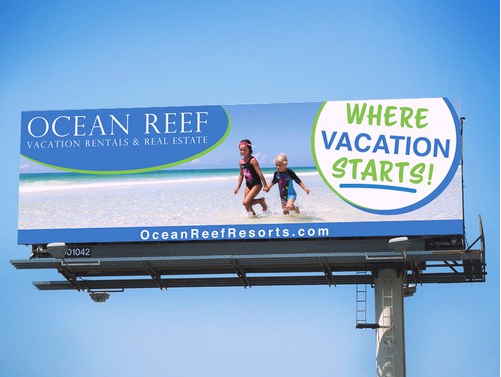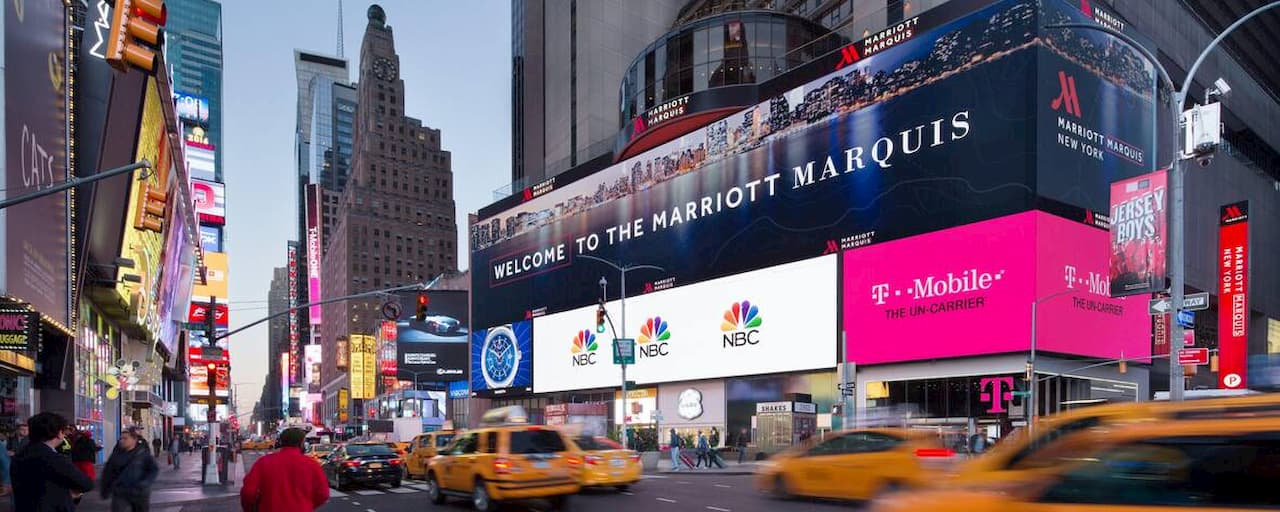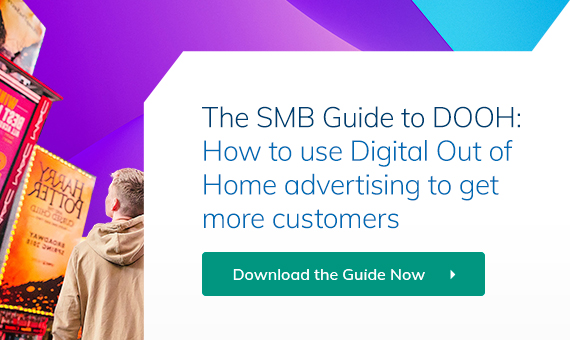In today’s digital age, hotel marketers are always looking for new and innovative ways to reach potential guests and drive bookings. With online marketing becoming increasingly saturated, it’s important for hotel owners to explore new channels that offer a competitive advantage.
Imagine that you’re strolling through a busy airport terminal, lugging your luggage behind you, trying to find your gate. Suddenly, your eyes are drawn to a sleek digital display advertising a luxurious hotel just minutes away from your final destination. The ad showcases stunning images of the hotel’s spacious rooms, relaxing pool, and delectable dining options. Suddenly, your travel fatigue fades away, and you can’t help but imagine yourself lounging on a plush hotel bed, enjoying the perfect vacation. This is the power of programmatic digital out-of-home (pDOOH) advertising for hotel marketing.
pDOOH advertising is an effective tool for hotel marketers looking to stand out from the crowd and reach their target audience. Unlike traditional DOOH, pDOOH is bought and sold in real-time through an automated bidding system. This means that hotel marketers can reach their target audience at the right place and time, and adjust their campaigns in real-time based on performance data.
Key Benefits of pDOOH for Hotel Marketing
1. Increased Reach and Targeting
pDOOH allows hotel marketers to target their ads to specific locations and demographics, ensuring that their message reaches the right audience. For example, a hotel in a beach destination can display ads on screens at nearby airports and train stations to target travelers coming to the area. The ads can showcase the hotel’s beautiful beachfront location, luxurious amenities, and enticing off-season rates. They can even include a call-to-action, encouraging viewers to book their stay directly from their mobile device.

(Image source: 99designs.com)
Another hotel may want to promote its new spa package to travelers who are arriving at the nearby airport. It can leverage digital out-of-home by placing ads on screens in the airport’s baggage claim area. The ads can feature a relaxing image of the hotel’s spa with messaging such as “Indulge in our new spa package for the ultimate relaxation after your travels”. By targeting travelers who have just arrived and are looking for ways to unwind, the hotel can effectively drive interest and bookings for their spa package.
2. Real-Time Optimization
pDOOH allows hotel marketers to adjust their campaigns in real-time based on performance data. This means that if a particular ad is not performing well, it can be swapped out for a more effective one, or the targeting can be adjusted to reach a different audience.
Let’s say a hotel has launched a pDOOH campaign targeting business travelers in a particular city. The hotel has selected several locations around the city where they know their target audience is likely to pass by, such as airports, train stations, and convention centers. After running the campaign for a few days, the hotel’s marketing team notices that the ad is not getting much engagement or clicks, even though it’s being displayed in high-traffic areas. They realize that the ad copy and creative might not be resonating with their target audience. With pDOOH, the hotel can quickly make changes to its campaign in real-time. The marketing team decides to switch out the original ad creative for a new one that features a more compelling message and a stronger call-to-action. They also adjust the targeting to focus more on specific times of day when business travelers are most likely to be passing by the screens.

(Image source: oohtoday.com)
By monitoring the campaign’s performance data, the hotel can see that these changes have led to an increase in engagement and clicks. They continue to optimize the campaign throughout its duration, making adjustments as needed to ensure that it is reaching the right audience and driving bookings.
3. Enhanced Creativity
pDOOH allows for greater creativity in ad design. Because the ads are displayed on digital screens, they can include dynamic elements such as video and animation, making them more engaging and memorable to potential guests. For example, a hotel can create an ad that showcases its beautiful rooms with a video of guests enjoying the hotel amenities, such as the pool, spa, or restaurant. It can also use real-time data feeds to display live weather updates or current events to entice guests to book a stay.
4. Improved ROI
Return on Investment (ROI) is a crucial factor for hotels when it comes to leveraging digital out of home for marketing success. The goal of any marketing campaign is to generate revenue, and hotels need to measure the effectiveness of their advertising efforts to ensure they are getting a positive return on their investment.
Digital out of home advertising allows hotels to track various metrics to evaluate the performance of their campaigns. These metrics can include the number of impressions, clicks, and conversions. By analyzing this data, hotels can determine which campaigns are driving the most bookings and revenue and optimize their strategies accordingly.
Best Practices for Leveraging Programmatic DOOH for Hotel Marketing Success
1. Know Your Audience
1. Know Your Audience
The first step in any successful marketing campaign is to know your target audience. Who are the guests you want to attract? What are their interests and behaviors? Where do they spend their time? By understanding your audience, you can create ads that resonate with them and display them in the right locations.
2. Use Data to Optimize Campaigns
pDOOH provides valuable data on the performance of your campaigns. Use this data to optimize your campaigns in real-time. If a particular ad is not performing well, try swapping it out for a more effective one. If your ads are not reaching the right audience, adjust your targeting.
3. Incorporate Dynamic Elements
pDOOH allows for greater creativity in ad design. Use this to your advantage by incorporating dynamic elements such as video and animation. This will make your ads more engaging and memorable to potential guests.
4. Integrate with Other Channels
pDOOH is most effective when used in conjunction with other marketing channels. Consider integrating your pDOOH campaigns with your social media, email marketing, and other advertising efforts to create a cohesive brand message and increase the effectiveness of your campaigns.
5. Focus on ROI
At the end of the day, the goal of any marketing campaign is to drive bookings and revenue. Keep this in mind when creating your pDOOH campaigns. Use data to measure the effectiveness of your campaigns and make data-driven decisions to optimize them for maximum ROI. At the end of the day, the goal of any marketing campaign is to drive bookings and revenue. This is why hotel marketers should focus on ROI when creating their pDOOH campaigns.
In conclusion, pDOOH is an effective and innovative way for hotel marketers to reach potential guests and drive bookings. By leveraging the benefits of pDOOH and following best practices, hotel marketers can create successful campaigns that resonate with their target audience and drive revenue. Encouraging guests to leave positive guest reviews on search engines and other platforms can also help to enhance the effectiveness of pDOOH campaigns. As the digital landscape continues to evolve, programmatic DOOH is a tool that hotel marketers should consider adding to their marketing mix to stay competitive and drive success.
Get Started with Programmatic DOOH Today
You’re now ready to launch your campaign.
With The Neuron, this all happens via single-click processes on a dashboard that’s easy to use and navigate. You can then use the platform to track your campaign and view in-depth analytics so you can adjust and optimize in real-time.
It couldn’t be easier to get started with programmatic DOOH.
Start now!


